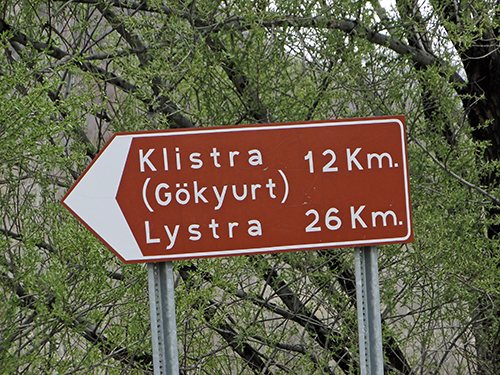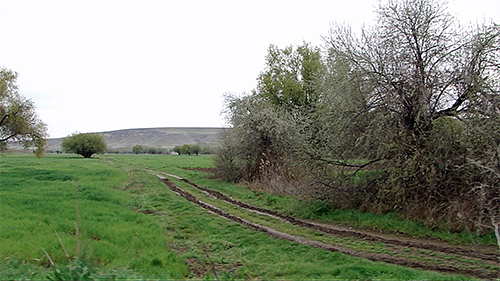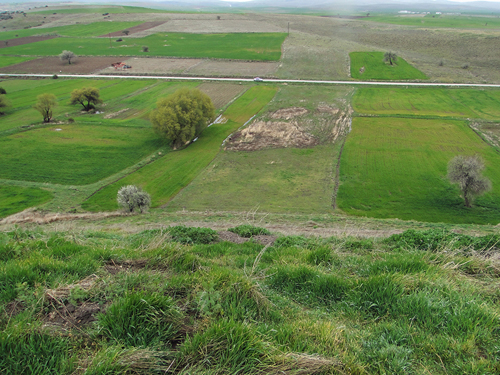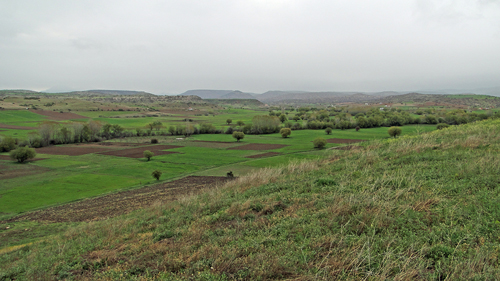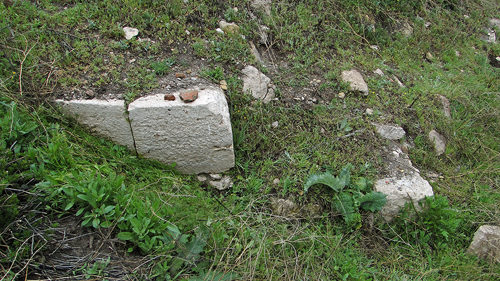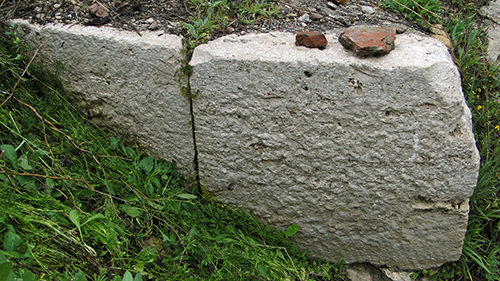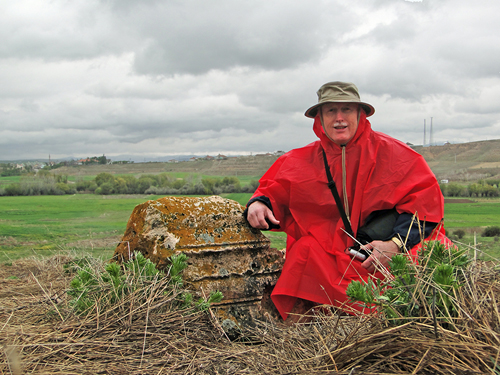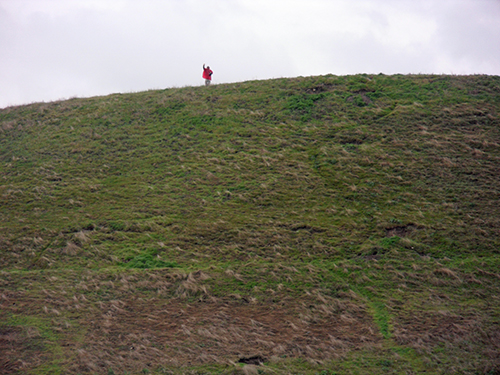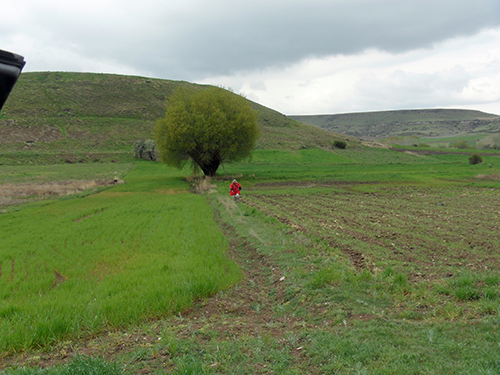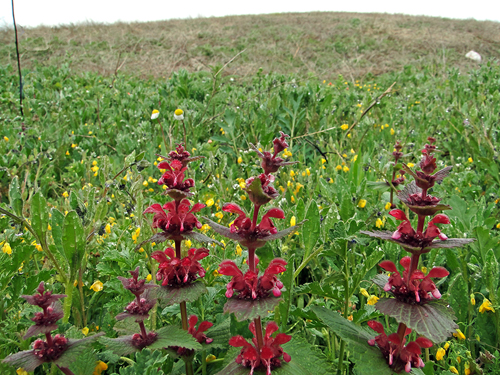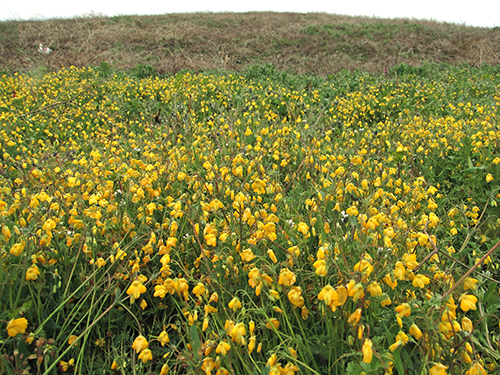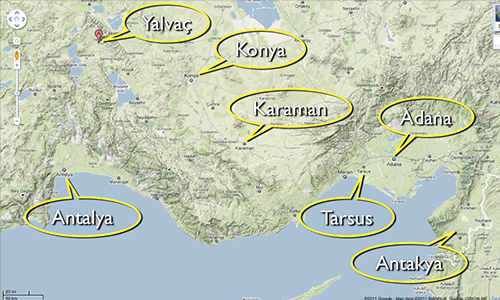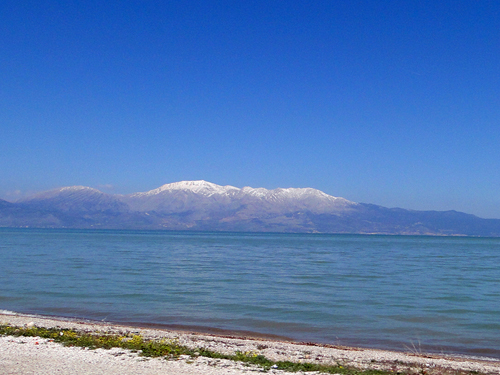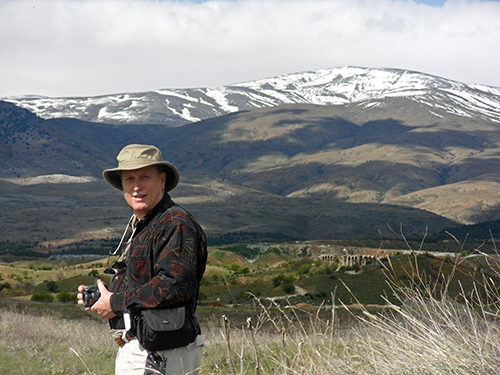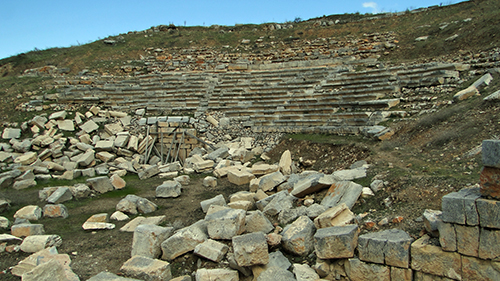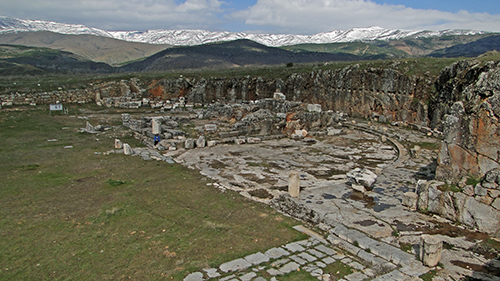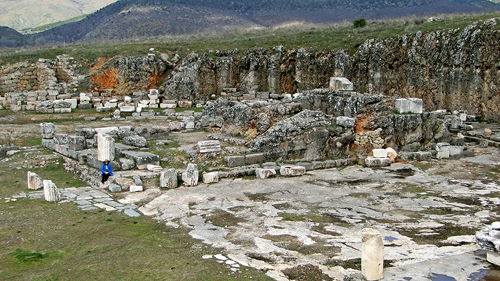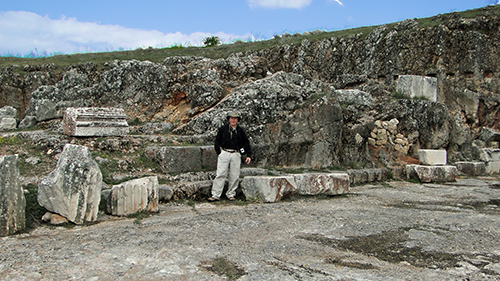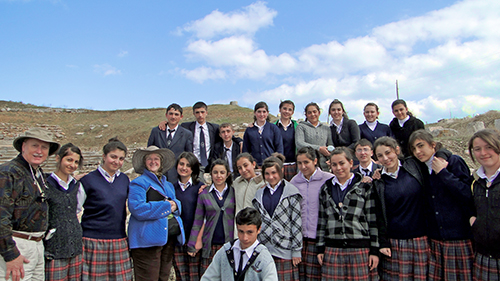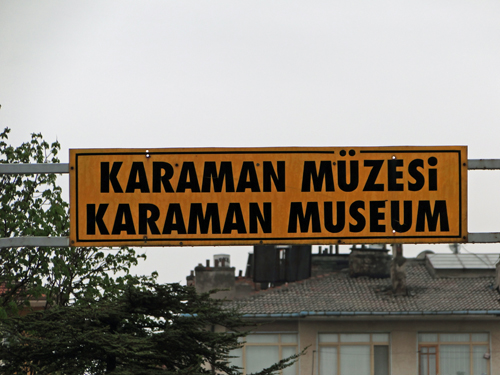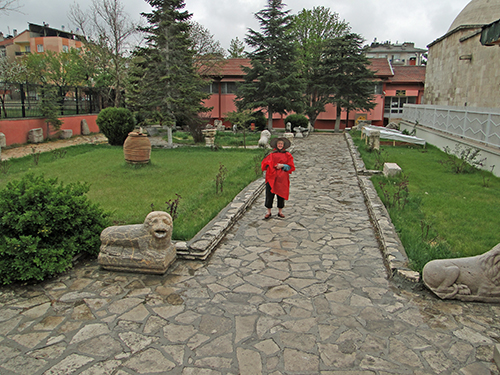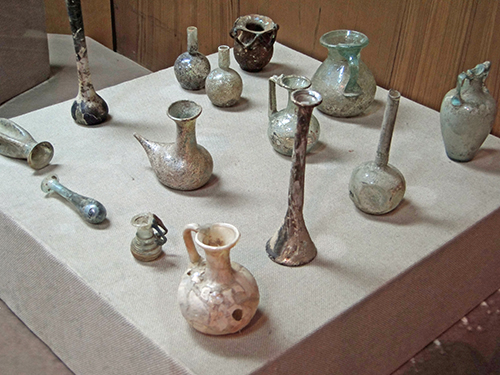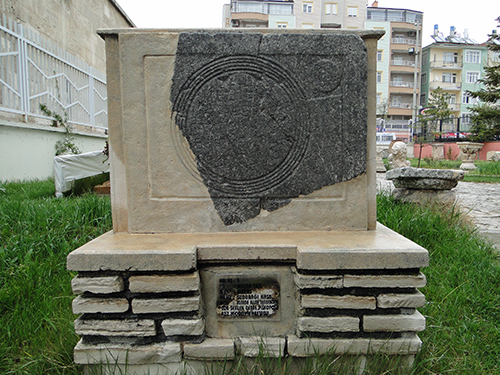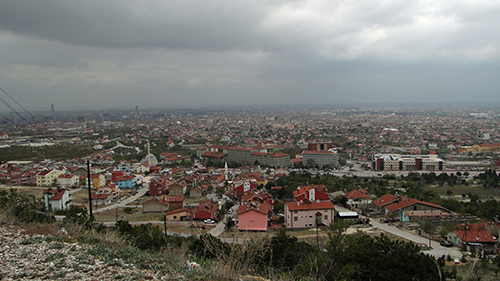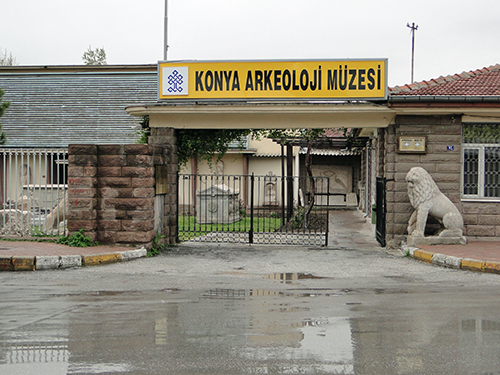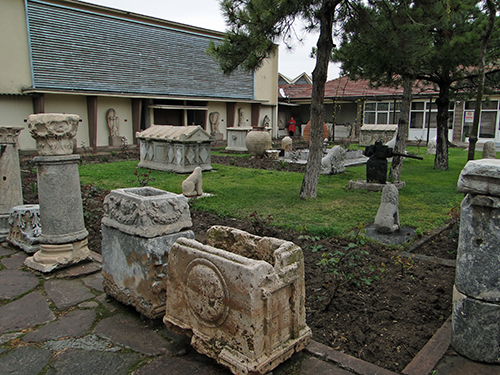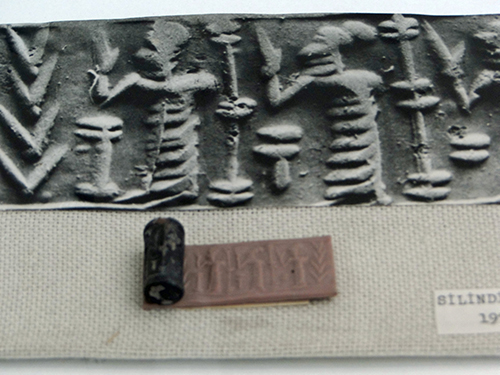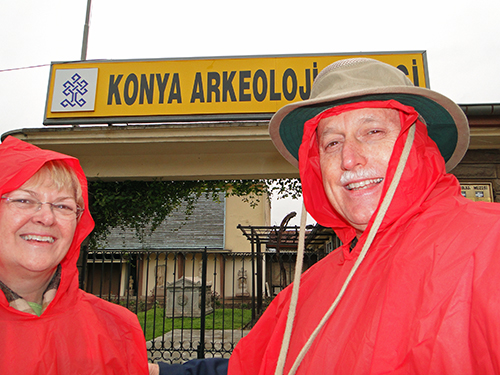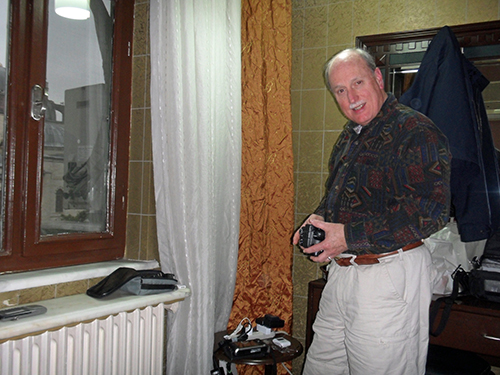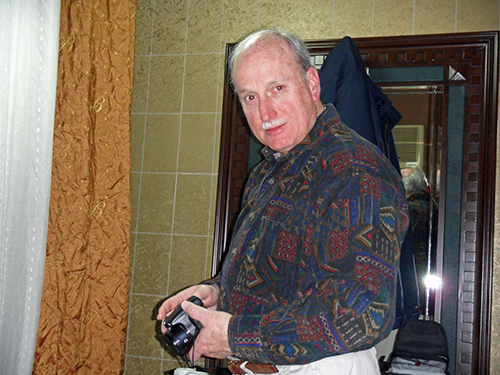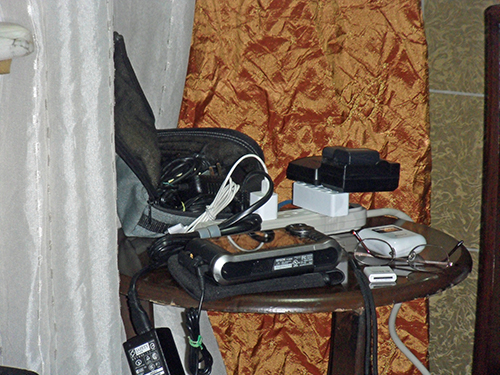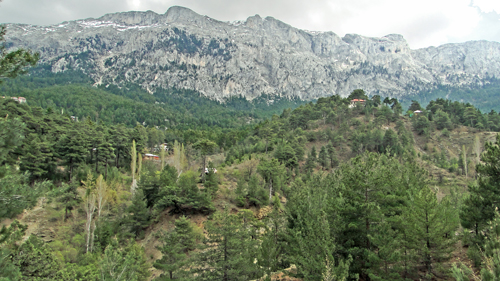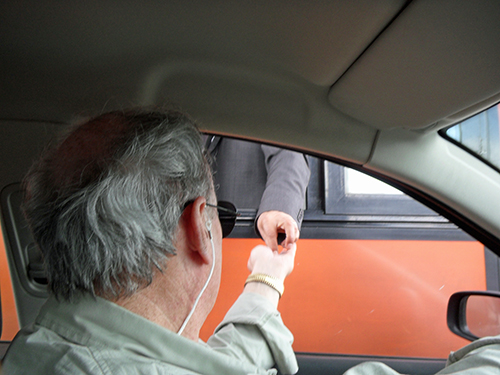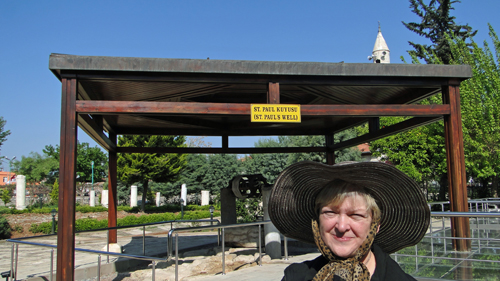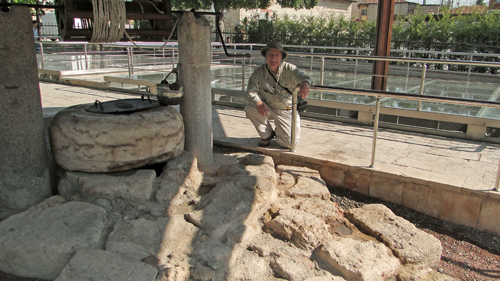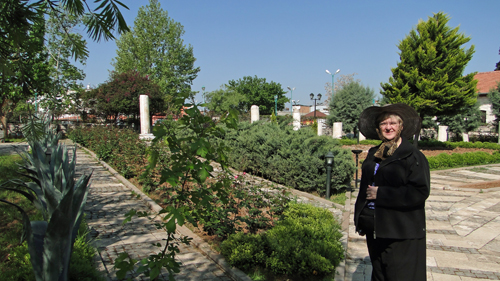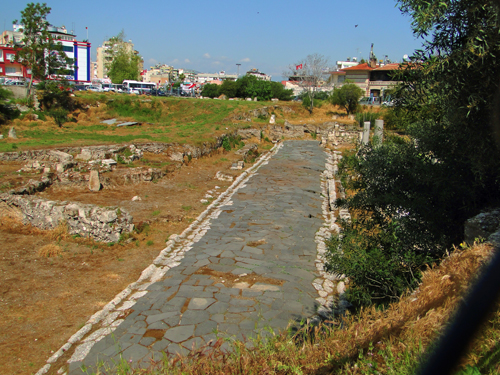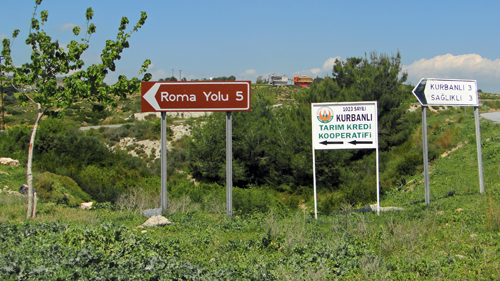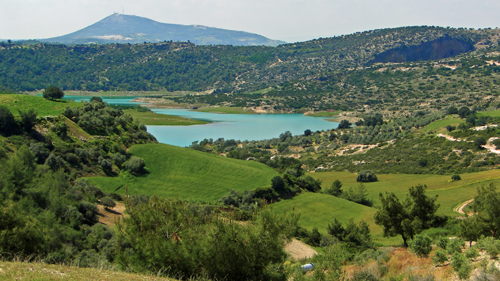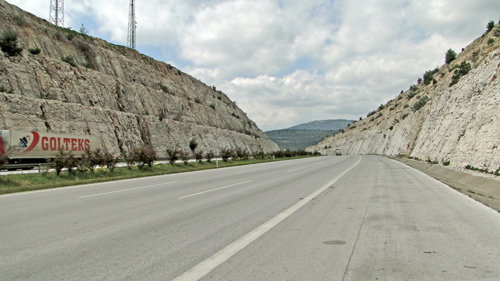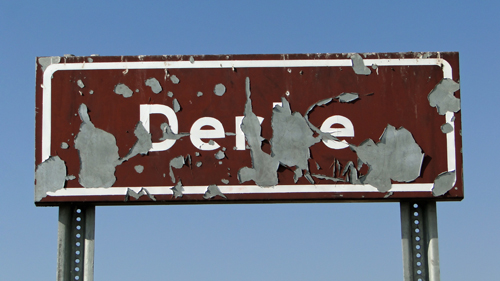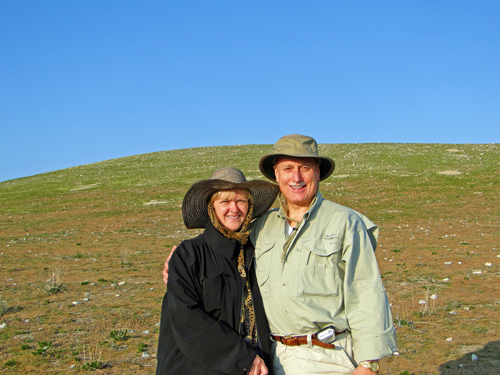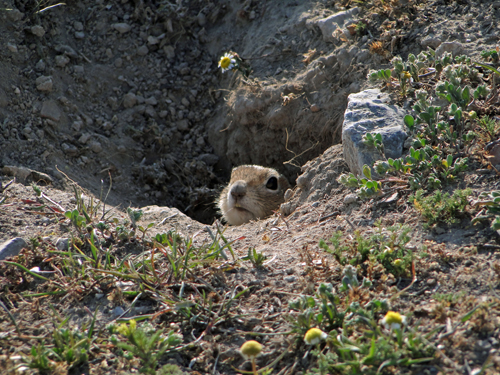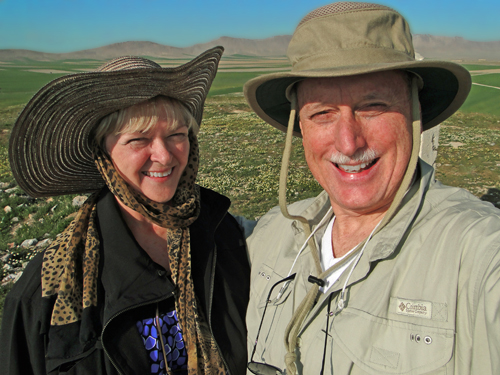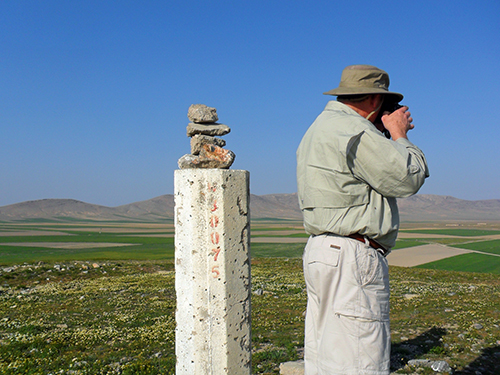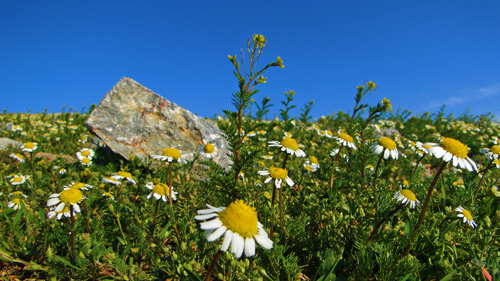April 12, 2010 (Monday)
Konya. Glad I wore earplugs last night. Even with the plugs I heard the Muslim “call to prayer” at 5:00 am. Of course, we are in the Muslim “bible belt,” so I guess these calls to prayer are louder and longer than most. Finally up at 5:40 am—we might as well get up since it’s obviously time to “point east.” Got our duds together and then did a movie from the hotel balcony abut the place of Iconium on Paul’s first missionary journey (3 tries finally did the trick). This morning is still cold and wet. Breakfast is in the restaurant on the first floor. We decide our hotel would be a great hotel for a tour group.
Lystra. Jerry retrieves the car from the underground parking garage where he parked when we arrived, and we load up in the drizzling rain and head out. We make our best guess for getting to Lystra and go pretty far on D696 heading SW. After feeling like we missed a turn or a sign because we have gone what feels like too far, we finally decide to stop at a gas station that suddenly appears on the right to ask for directions. I show our map to the non-English speaking attendants where we are trying to go. They motion to go back the way we came, so we turn around. Just as we’re driving back out onto the highway, Jerry sees a brown and white sign on the right that says “Lystra 26km” on a road angling right. Had we not stopped at the gas station just then, we probably never would have found our way to the ancient tel of Lystra. Providence. So off we go. We take one wrong turn and end up on a muddy street in the village of Gokyurt—oh, the looks we got! We turn around, backtrack, find the road again and continue.
We were just about to give up, thinking that, once again, we just must have missed a sign somewhere along the way, when off to the right the tel of Lystra appears in the distance. Jerry recognizes the tel immediately. Can’t believe it! The tel of Lystra appears to be slightly larger than Derbe. We saw a dirt road off to the right that looks as though its path goes around the tel. Thinking that path has to be the access road to the tel, Jerry turns off the paved road to try it—big mistake! (Don’t forget the weather has been rainy for several days.) Within about 30 yards, we quickly realize we are getting seriously stuck in deep, thick mud. Jerry really has to gun the car in reverse to get us out of there. This car is now covered in mud!
We go down the paved road more directly in front of the tel and park along the highway. Jerry decides he will have to reach the tel on foot. The weather is cold and windy and drizzly, but my persistent scholar dons his hat, rain parka, camera and off he goes. I sat in the car and watched him wandering around up there on the tel. He was gone a long time, sometimes completely disappearing on the other side. Can you find the car on the road in this shot below from the top of the tel?
When he finally came back down, we made another Jerry-as-talking-head movie with the tel of Lystra in the background (takes 2 tries). I had an ingenious idea of using the umbrella to block the wind from the camera microphone—worked like a charm. We also did a “drive by” movie, where I drive slowly down the road by the tel as Jerry records and narrates a video about Lystra. The day already is complete for Jerry. We found Lystra.
Yalvaç (Antioch of Pisidia). After our side trip out to the tel of Lystra, we retrace our road back into Konya to find our way to D330 in order to head to our next target, ancient Antioch of Pisidia, which lies just outside the modern town of Yalvaç. The D330 route to Yalvaç is through the mountains, and at times we see snow on the ground. On the way, we ate our snack: boiled egg (saved from breakfast), some peanut butter crackers, and 2 oranges. Bon appétit! On to Yalvaç—the Garmin proved helpful in getting us to the highway to Yalvaç. To our surprise a sign to Yalvaç actually appears.
When we arrive in Yalvaç, hundreds of people are at the center city market. We stop so I can ask a policeman where our hotel is located (Oba Otel—the only hotel in Yalvaç). He speaks no English, and I speak no Turkish, so we are quite a pair trying to communicate. I finally understand something about traffic keeping us from getting to the hotel and that someone is coming to help us. About 15 minutes later, a car drives up, and a man comes to speak to the Polis and then to us in minimal English. We finally understand from him that our best action to take right now is not to try to go to the hotel, since the way actually is blocked by the crowds of people, but rather to go on to the ancient site of Antioch of Pisidia just outside of town. He will lead us to the site of Antioch of Pisidia by driving his car there with us following him in our car (he tells us to “repeat me”).

Antioch of Pisidia. A few turns through city streets and just north of town and we arrive at the site. The Turkish people are so helpful. We brash Americans could learn a thing or two from them about helping visitors to our country. We pay our 3TL site entrance fee and the ticket man gives us all kinds of literature about tourist and archeological sites in Turkey. We ask about a water closet (bathroom), having been on the road for a while now, and the ticket man walks us to the facilities, since he can’t explain how to get there. What a relief—it’s been a long drive today!
We then start our tour of the remains of ancient Antioch of Pisidia. The site is impressive but not well maintained. We see the typical Greco-Roman remains: a theater, church (synagogue), Temple of Augustus, nymphaeum, etc. In the distance we can see the remains of Roman aqueducts, which you can see off to the right in the picture of Jerry below.
Shortly after we arrived, a class of high school students comes running eagerly up the hill to catch up with us to “speak English,” that is, practice their English skills. We have nice exchanges with them. We take a picture with the group and get the teacher’s email address so we can send the picture to her. We figure the ticket guy called her to let her know Americans were on the site. We were the only tourists at the site, and the students made a beeline for us. After some time with the class, we finish seeing the site. We just had time. The site was waiting on us in order to close for the day.
When we get back to the entrance gate to leave, the ticket taker and another guy are waiting for us. They tell us they will show us the way to Oba Otel, so they get in the back seat and point the way. Good for us both: they get a ride back into town, and we get to our hotel. Some streets are quite narrow, so driving the car is a little harrying. Our hotel is on a small street filled with “markets” with vendors selling their wares, so now we get the picture about the policeman saying we couldn’t drive there because of traffic. We park out front and check in. The hotel is adequate, and the people are nice.
After settling in, we walk up to a café that we think is a restaurant, but the establishment turns out to be a coffee shop only (Turkish equivalent of a Starbucks). We ask for a restaurant recommendation, and one of the patrons sitting at table nearby with his laptop computer offers to walk us to a nice restaurant. The walk is pretty long, and the guy has to get all the way back to his coffee shop and computer. The Turkish people are really something; they can’t tell you, but they will lead you, ride you, or walk you to your destination. The restaurant is very nice, cheap, and the food is great. Two full meals plus Cokes for only 16TL.
After supper we walk back to the Internet café we spotted earlier across the street from our hotel and spend a little over an hour on the Internet. The charge is only 2.75 TL—what a bargain! Back to our hotel, we get hot Turkish tea to take up to our room. Jerry immediately goes into his nightly charging-the-electronics routine, setting up his familiar “charging station” that we have at every stop. We briefly look at plans for tomorrow and do a little journaling. Getting late—good night!
For a video of the Lystra and Antioch action today:
